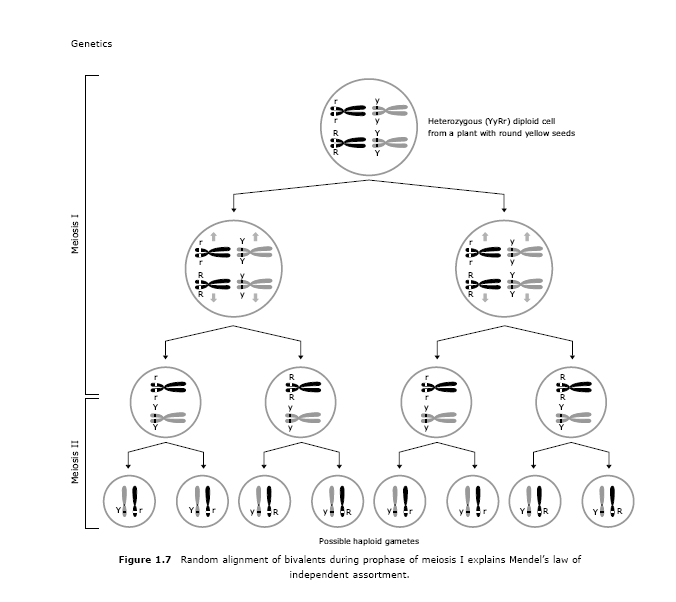In 1902, Walter S. Sutton and T. Boveri proposed the chromosomal theory of heredity. The theory provides a way
to explain how the cellular transmission or chromosomes passes genetic determinant (i.e. genes) from parent to
offspring. According to this view:
1. Chromosome contains the genetic material (genes) that is transmitted from parent to offspring.
2. Chromosomes are replicated and passed along generation after generation from parent to offspring.
3. The nuclei of most eukaryotic cells contain chromosomes that are found in homologous pairs (i.e. they are
diploid). One member of each pair is inherited from the mother, the other from the father. At meiosis, one of the
two members of each pair segregates into one daughter nucleus and the other segregates into different
daughter nucleus. Therefore, gametes contain one set of chromosomes (i.e. they are haploid) as shown in
figure 1.6.
4. During gamete formation, different types of chromosomes segregate independently of each other.
5. Each parent contributes one set of chromosomes to its offspring.







